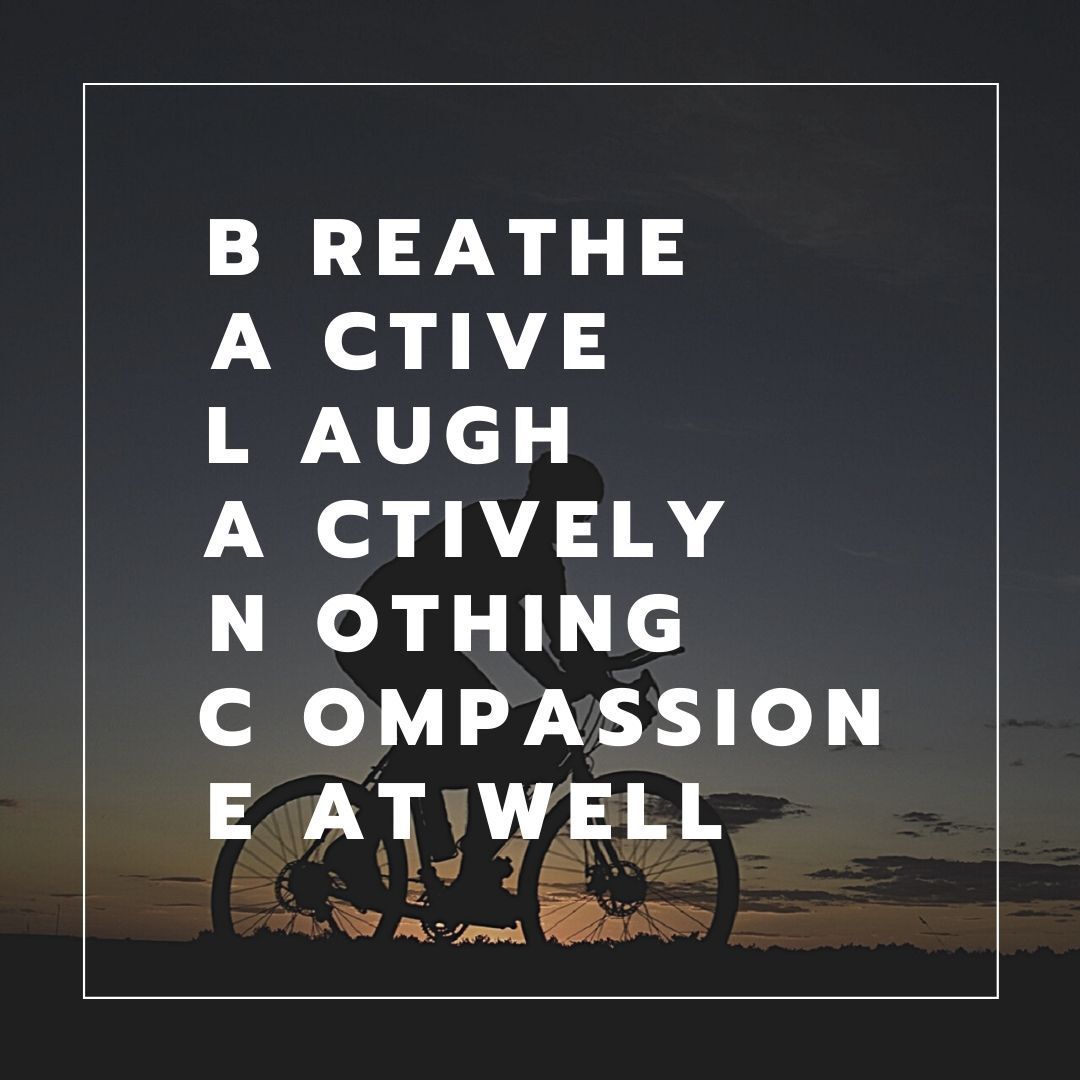Why your happiness could be out of balance
Did you know that there are four ways our brain shows us we are happy and if you are only getting happiness from one hormone you could feel out of balance.
Judy Claughton, Director of Happiness at BalanceTime explains "Most of us love the feeling of being happy. In a happy state of being we can feel more capable, more resilient, we feel more in flow with life and things seem to just work out better. Happiness isn't just for our home-life, as happiness at work has a direct impact on our productivity. Various studies show productivity increases with happiness by up to 40 percent (13% shown in a University of Oxford Study 2019 and 37 percent shown in a University of Warwick Study – specifically looking at Google). But the benefits are much more than just how well people perform a task. Happiness helps creativity, positive risk taking, instils loyalty and reduces churn. Happiness is also good for your physical and mental health and that means fewer days off sick. Depression affects one in six people in the UK (source office of National Statistics 2022) with the average time off sick being 20 days. That's a month out of work, per employee with depression. Whatever your business size these kind of numbers can have a critical impact on operations.
These results have led to a rise in stress prevention measures, wellbeing and stress management workshops and programmes. but happiness needs to go deeper to make these measures 'stick'. , first people need to understand why it’s important and then look at ways to build a healthy happiness culture.
Happiness has had some bad press recently with the concept of toxic positivity, when staff are not allowed to show that they are struggling or upset or be given space to notice and feel the full spectrum of human emotions that is totally natural and normal to feel at different points in our life. It’s important that the right approach to happiness in the workplace – can actually allow space and supportive structures when something is not right (or someone is sad/unhappy) too.
One of the first things I like to introduce is awareness of what makes us/different people happy and the links between these people/situations and the happiness chemicals we produce in our brain. As happiness hormones are triggered by different things we can sometimes find gaps in the things we choose for our happiness and if we don’t have a balance of ALL 4 of the happiness hormones we can feel out of balance!
A reminder of the four main happiness hormones and how to ‘hack’’ them:
Dopamine: The ‘feel good’ hormone is released when we enjoy pleasure and feel rewarded or connected to a positive memory. Pleasure can be from food (and certain foods are known for higher dopamine production like chocolate, avocado and citrus fruits), doing things we enjoy and even being acknowledged for a job well done. The food link can be dangerous – as foods high in sugar, carbohydrate and saturated fat may give a short term release of dopamine, but over the longer term they cause our dopamine levels to decrease. A bit like our addiction to social media and different apps. Social media like you tube shorts, Facebook, Instagram and TikTok as well as many apps are designed to ‘hook’ us by activities that stimulate the reward centre of our brain and dopamine production just slightly so we find ourselves craving more and more. This is often why a reliance on dopamine alone is linked to addiction and substance abuse. Certain health conditions and situations cause our dopamine levels to plummet – like situations of high stress, health conditions like Multiple Sclerosis and Parkinsons and lack of sleep.
Some hacks for increasing dopamine include: smelling/eating an orange, opting for a small amount of dark chocolate rather than high saturated fat alternatives and work based actions you can take include having realising task/goal lists and being able to tick off those tasks regularly and celebrating small wins with people you work with – or having an accountability partner if you work alone. Self-care activities also help, like reading or listening to a podcast, pampering your skin/nails/hair, having a bath, enjoying some meditation and spending time with friends and family (see also oxytocin).
Oxytocin: The ‘love’ hormone is released when we spend time with people we care about. It isn’t ‘just’ about romantic love – although yes oxytocin is released through hugs, physical affection and sex. It’s also released during the process of breastfeeding and baby and even child-birth. All those birth-breathing exercises you see and hear people insisting on in films and in real life hospitals are about helping increase feelings of relaxation, that help the body’s stress levels (hormones) fall and natural oxytocin levels surge to pain relief producing levels.
It’s not just people, spending time showing affection to our pets – particularly dogs and cats boosts your oxytocin. Having a positive relationship with your dog has been proven to even help reduce blood pressure and increase immunity.
Oxytocin is critical in a workplace not to turn all office spaces into ‘cuddle pits’ but to promote trust, connection and understanding.
Some hacks for increasing oxytocin include: giving and receiving hugs, stroking a pet and giving compliments and gifts. At work, the quickest way to boost this is to compliment your colleagues and develop a positive culture of acknowledgement and support. The physical act of giving the compliment creates the oxytocin – the receiver gets a dopamine boost – until they stop and say thank you and acknowledge you in return. Other things that help include attending yoga and meditation classes and the sense of connection that comes through these relaxation activities in a supportive group environment.
Serotonin: The ‘soothing’ hormone helps regulate your mood and avoid peaks of anger, sadness or depression and even over excitement. This regulation helps us learn and focus better, sleep better and regulate the body’s natural rhythms including the nervous system. A lack of serotonin is linked to depression and anxiety, which in turn decreases the production of serotonin – explaining why people can feel like they are on a dangerous downward spiral.
Some hacks for increasing serotonin include getting out in the sunshine, as the sunlight directly links to our brain’s serotonin production and being out in nature. Although physical exercise is more directly linked to endorphin production, the link between the heart rate increase and motor activity of running and swimming boosts serotonin production. Again, meditating helps reduce stress hormones and naturally boost our serotonin.
Work hacks that I’ve seen be really successful for helping boost this happiness hormone and increase productivity at work, include encouraging one minute of meditation/silence before a meeting begins to help ‘settle’ and calm everyone and one minute of quiet before everyone leaps up to the next meeting/task, and a culture that actively avoids over scheduling/back to back meetings. As well as other ‘bigger’ initiatives like a regular meditation club/group, running club and running or walking challenges for the office and an away-day in nature from tree-planting to forest bathing to scaling the heady heights of a tree-top challenge like Go Ape.
Endorphins – ‘the exercise and pain relief’ hormone. Most associated with physical exercise and that glow or euphoric feeling that you can feel after exercise, this is a powerful pain-relieving hormone. It’s important to note that friends and colleagues with physical injuries/recovering from operations or those experiencing back and shoulder pain will have lower levels of endorphins and be in a heightened state of (physical) stress which has a big impact on happiness and productivity.
What I try to encourage is finding movement that you love – which could be playing football with your child or team, going to the gym on your own, or dancing round the kitchen at home.
There is a big link to boosting endorphins through play and laughter – which might mean playing with your dog or your children, watching comedy or playing a game with friends/colleagues and encouraging a respectfully playful mindset in the workplace.
One of the happiest places I have ever worked had an office based near a park where we all tended to spend lunch hours walking, eating, talking and enjoying the landscape with colleagues that became friends. We played child-ish games like frisbee and non-competitive football, some of us ran and even trained for running competitions, others just enjoyed short walks, sitting in the sunshine or under the shelter of the trees watching the rain. We had team days out in country parks and nature centres, we even had a whole talks and workshop programme led by staff volunteers sharing their passions and knowledge – from meditation to bird-watching to photography. There was a supportive and playful culture to the workplace – where compliments were given freely and a ‘failure’ culture was encouraged – i.e. one where it is safe to fail/make mistakes, and learn from them – which actually created a system that no failures happened on the tasks/projects that were critical for people’s health and safety.
Physical activity and meditation come up a lot when you talk about happiness as the two activities are some of the only activities proven to both decrease production of stress hormones like cortisol and adrenaline and increase production of at least three out of four happiness hormones.
When I run happiness workshops, one of the things I love to share is just how much happiness has an impact on us physically. You can try this at home, best with a friend or colleague to help you. Stand (or sit if you can’t stand) and hold your arm out and get your friend to gently push down on your arm, while you resist them. You are not trying to hurt each other or allow the movement just gently resist each other. Next think of a sad thought and really feel that thought begin to become a feeling in your body and let your friend push on your hand as you try to resist. Then, shake the sad thought off and bring a thought of absolute joy and happiness into your mind and let the friend push on your hand as you try to resist. Almost everyone will notice greater strength with the happy thought, but a strength that is ‘easy’ and a little bit flexible rather than a rigid and forceful strength. Go on try it. I’d love to hear how you get on!
Bringing a happiness mindset to work – won’t just happen with one workshop, it takes an ethical and cultural shift for some organisations and sometimes its about starting small with the tasks that are easy to implement and that get everyone excited and motivated to be part of a new happiness mindset."
If you want to chat about increasing happiness for you personally or in your work- please do reach out to www.balancetime.co.uk or connect with Judy Claughton on Linked In.










